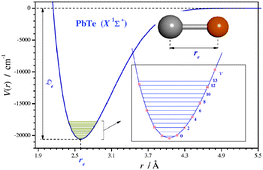Pure rotational spectra of PbSe and PbTe: potential function, Born–Oppenheimer breakdown, field shift effect and magnetic shielding†
Abstract
The pure

* Corresponding authors
a Dipartimento di Chimica “G. Ciamician”, Università di Bologna, via F. Selmi 2, 40126 Bologna, Italy
b Department of Chemistry, University of North Texas, Box 305070, Denton, USA
c
Institut für Physikalische Chemie und Elektrochemie, Lehrgebiet A, Gottfried-Wilhelm-Liebniz-Universität Hannover, Callinstraße 3A, 30167 Hannover, Germany
E-mail:
jens-uwe.grabow@pci.uni-hannover.de
The pure

 Please wait while we load your content...
Something went wrong. Try again?
Please wait while we load your content...
Something went wrong. Try again?
B. M. Giuliano, L. Bizzocchi, S. Cooke, D. Banser, M. Hess, J. Fritzsche and J. Grabow, Phys. Chem. Chem. Phys., 2008, 10, 2078 DOI: 10.1039/B716896A
To request permission to reproduce material from this article, please go to the Copyright Clearance Center request page.
If you are an author contributing to an RSC publication, you do not need to request permission provided correct acknowledgement is given.
If you are the author of this article, you do not need to request permission to reproduce figures and diagrams provided correct acknowledgement is given. If you want to reproduce the whole article in a third-party publication (excluding your thesis/dissertation for which permission is not required) please go to the Copyright Clearance Center request page.
Read more about how to correctly acknowledge RSC content.
 Fetching data from CrossRef.
Fetching data from CrossRef.
This may take some time to load.
Loading related content
